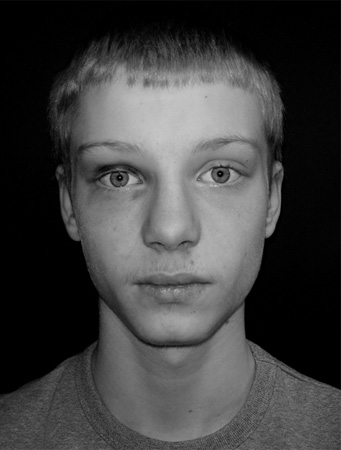History and exam
Key diagnostic factors
common
diplopia on upward gaze
The classic presentation of orbital fractures in children is the absence of subconjunctival haemorrhage, with upgaze diplopia (double vision) and general malaise.[11]
Pain on upward gaze is often an accompanying symptom.
derangement of globe position
Proptosis or exophthalmos: an anterior displacement of the eye in the orbit.
Hypoglobus: a downward displacement of the eye in the orbit.
Enophthalmos: a posterior displacement of the eye in the orbit.
uncommon
intercanthal distance increased
Intercanthal distance may be increased due to the injury (average distance is 32 mm).
This is a key factor for naso-ethmoid-orbital fractures.
oculovagal symptoms (bradycardia, hypotension, nausea/vomiting)
The oculovagal reflex refers to the presence of vagal stimulation by pressure to intraorbital structures, which results in bradycardia, hypotension, nausea, and/or vomiting.
This is a common symptom in children.[11]
Other diagnostic factors
common
visual disturbance
Visual impairment or loss can occur as a result of damage to the optic pathway at different levels such as the optic nerve or the globe.
peri-orbital ecchymosis
A cardinal sign associated with a pure orbital floor fracture. Also known as 'panda eye'.[Figure caption and citation for the preceding image starts]: Paediatric blow-out fracture: patient looking in central gaze. Mild right circumorbital ecchymosis is notedFrom Cobb A, et al. Emerg Med J. 2009;26:351-353; used with permission [Citation ends].
peri-orbital oedema
Oedema may overlie a residual local injury. Patients should be reviewed 1 week later following resolution of oedema.
nerve sensory loss
Infra-orbital nerve sensory loss to upper lip and face may be present if damage to the nerves has occurred.
subconjunctival haemorrhage
If posterior limit of the subconjunctival haemorrhage is present, this indicates injury to the globe surface. If no posterior limit is present, it is likely to have an associated fracture.
This is an uncommon sign in children.
uncommon
step defect infra-orbital rim
Seen in impure fractures.
loss of colour vision
This is a herald sign of potential retrobulbar haemorrhage causing early optic nerve ischaemia.
impaired pupillary light reflex
To assess cranial nerves or associated optic nerve injury. It can be direct nerve damage (neuropraxia) or indirect (ischaemia).
Consensual response shining light through closed eyelid should be used to examine for contralateral pupil constriction in very swollen eyes.
decreased visual acuity
After facial trauma, patients may describe decreased visual acuity.
Risk factors
strong
direct trauma
Sports-related injuries (particularly baseball or softball), assault, and road traffic accidents are common causes of ocular and facial trauma.[9][20][21] In one study of 49,660 cases of ocular trauma secondary to motor vehicle accidents, 35.5% of ocular injuries were orbital floor fractures.[20] In women, intimate partner violence is the third leading cause of orbital fractures.[12][13]
young adults and children
older adults at risk of falls
A common cause of orbital fractures is falls, particularly among adults age ≥65 years.[9]
male sex
Males are afflicted with zygomatic fractures more commonly than females, as they are more likely to engage in sports and interpersonal violence.[9]
Use of this content is subject to our disclaimer